Share
Or copy this URL:
https://www.metalroofing.com/news/what-class-four-roof/
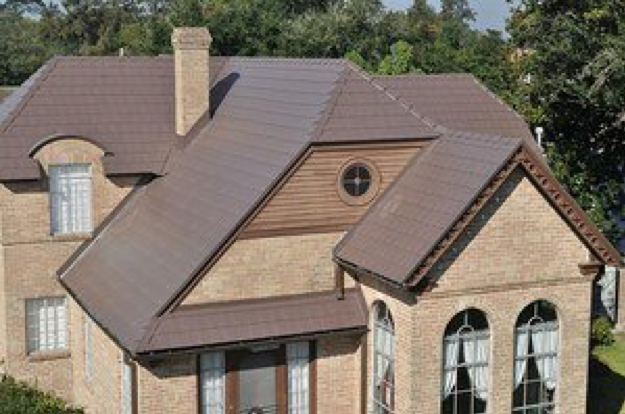
Posted by McElroy Metal
Most products undergo various testing during development to ensure performance and consumer safety. Metal roofing is no different. Routine metal roofing product testing covers everything from structural integrity topics like uplift to the ability to resist fire and flame spread.
We’re frequently asked about various testing standards and how designers and consumers should use the testing results in the real world.
To help readers understand, let’s dig into the specifics of Class four testing. First, it’s important to understand that Class four is an impact test standard used for shingles and metal roofing.
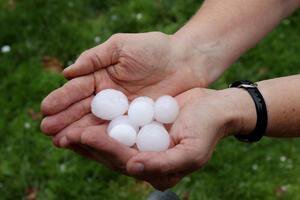
UL developed a test to rate the strength of roofing materials called the UL 2218 Impact Rating. These test results help determine if a roofing material is Class 1,2,3 or four.
As the chart below depicts, UL 2218 testing is completed by dropping four different-sized metal balls from various heights (to simulate hail). If the test product tears or fractures, it is considered a failed test.
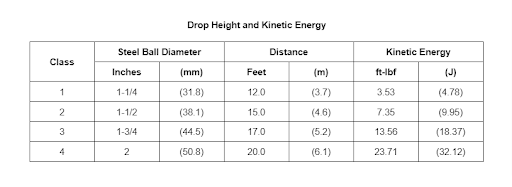
In contrast, most metal roofs are impact-resistant and rated Class four. McElroy Metal has over two dozen profiles in steel with a Class four rating available in thicknesses down to 29 gauge.
Class four ratings in alternative metals such as aluminum and copper are also available, although much less frequent. How do I know if I have an impact-resistant roof?
Determining if your roof is (or isn’t) impact-resistant can take a couple of different paths. For metal roofing, UL does not recognize a panel as being UL 2218 classified unless the label shown below is attached.
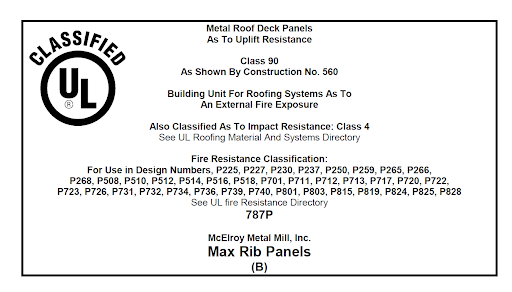
You can also visit the manufacturer's website where you purchased the material and look for completed testing information. For example, as shown below, McElroy Metal offers this information in the Downloads section of our website and on individual product pages.
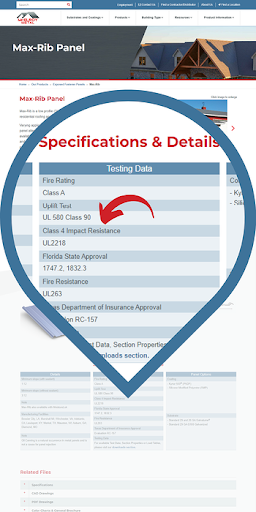
Shingles are rated Class 1 through four, with Class four shingles having the highest impact resistance. Typically, you cannot tell the impact rating by looking at a shingle.
The underside of the shingle or packaging usually shows the impact rating.
With Class four-rated metal systems, your roof is far more likely to remain watertight even after storm damage. Consequently, purchasing products with a Class four rating means you will have a smaller likelihood of damage after a hail event or a storm where debris has made contact with your roof.
Furthermore, replacing a roof is not the only expense when roofing fails – if the hail/debris causes a leak, additional damage is likely to occur inside the building.
And if reducing the chance for water penetration after a storm isn’t reason enough, there is more.
Based on years of data showing Class four roofing products lead to lower lifetime roofing costs and fewer replacements, many insurance companies offer reduced insurance premiums for those using Class four products.
Most products undergo various testing during development to ensure performance and consumer safety. Metal roofing is no different. Routine metal roofing product testing covers everything from structural integrity topics like uplift to the ability to resist fire and flame spread.
We’re frequently asked about various testing standards and how designers and consumers should use the testing results in the real world.
To help readers understand, let’s dig into the specifics of Class four testing. First, it’s important to understand that Class four is an impact test standard used for shingles and metal roofing.

How is Material Tested?
Underwriters Laboratories (UL) is a not-for-profit independent testing organization that delivers verified information to help consumers make accurate product decisions.UL developed a test to rate the strength of roofing materials called the UL 2218 Impact Rating. These test results help determine if a roofing material is Class 1,2,3 or four.
As the chart below depicts, UL 2218 testing is completed by dropping four different-sized metal balls from various heights (to simulate hail). If the test product tears or fractures, it is considered a failed test.

Are all shingles and metal roofs class four roofs?
The short answer to this question is no. In fact, the vast majority of shingle roofs haven’t been impact tested. Interestingly, those with successful Class four testing run 10-20% more expensive than their non-testing counterparts.In contrast, most metal roofs are impact-resistant and rated Class four. McElroy Metal has over two dozen profiles in steel with a Class four rating available in thicknesses down to 29 gauge.
Class four ratings in alternative metals such as aluminum and copper are also available, although much less frequent. How do I know if I have an impact-resistant roof?
Determining if your roof is (or isn’t) impact-resistant can take a couple of different paths. For metal roofing, UL does not recognize a panel as being UL 2218 classified unless the label shown below is attached.

You can also visit the manufacturer's website where you purchased the material and look for completed testing information. For example, as shown below, McElroy Metal offers this information in the Downloads section of our website and on individual product pages.

Shingles are rated Class 1 through four, with Class four shingles having the highest impact resistance. Typically, you cannot tell the impact rating by looking at a shingle.
The underside of the shingle or packaging usually shows the impact rating.
What does it take to get a Class four rating?
To achieve a Class four rating, a 2” in diameter steel ball dropped from a distance of 20’ above the roof must “show no evidence of tearing, fracturing, cracking, splitting, rupture, crazing or other evidence of opening” during the test procedure.Why is impact resistance important?
Impact resistance is important because it measures resistance to hail and debris. Generally speaking, you can’t label something as “hail proof,” but products classified as Class four meet the most substantial level of resistance that UL has deemed appropriate.With Class four-rated metal systems, your roof is far more likely to remain watertight even after storm damage. Consequently, purchasing products with a Class four rating means you will have a smaller likelihood of damage after a hail event or a storm where debris has made contact with your roof.
Furthermore, replacing a roof is not the only expense when roofing fails – if the hail/debris causes a leak, additional damage is likely to occur inside the building.
And if reducing the chance for water penetration after a storm isn’t reason enough, there is more.
Based on years of data showing Class four roofing products lead to lower lifetime roofing costs and fewer replacements, many insurance companies offer reduced insurance premiums for those using Class four products.